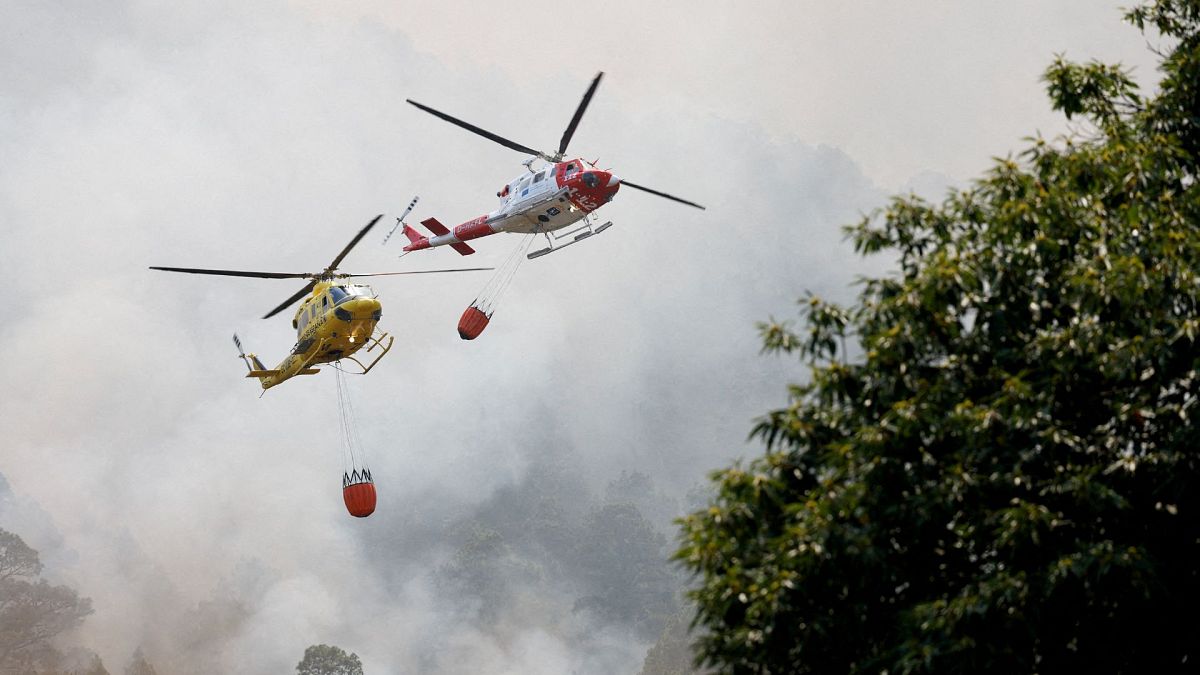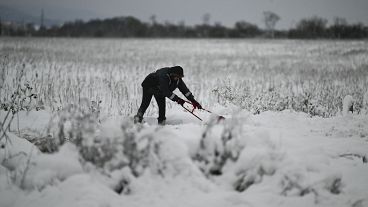Climate change is taking a mounting toll on Europe's forests. Satellite data could help save them.
A forest monitoring system that uses satellites to track threats such as climate change-fuelled wildfires and illegal logging could soon be implemented in the EU.
Climate change is taking a mounting toll on Europe's forests, as extreme heat and drought increase the risk of deadly wildfires.
Nearly 900,000 hectares of EU land was burned in forest fires last year, an area roughly the size of Corsica, according to a report released by the European Commission on Wednesday.
This makes it the second-worst year since monitoring through the European Forest Fire Information System (EFFIS) started in 2000. In 2017, 1.3 million hectares of land was burnt.
The degradation of Europe's forests spells trouble since their CO2-storing capacity is needed to meet climate targets and protect surrounding areas from flooding.
How would the forest monitoring system work?
On Wednesday, the Commission proposed a law that would see Brussels collect forest data from the EU's Copernicus Sentinel satellites.
EU member states would also be obliged to gather ground measurements of trends including the areas available for logging, the volume of trees and the location of ancient forests.
"We need to see the trends, need to predict better, we need to see how they are responding to climate change," says EU Environment Commissioner Virginijus Sinkevicius.
"At this moment there are no comprehensive monitoring requirements to provide an overall picture of the state of our forests," he adds.
Close to half (43 per cent) of the land burnt last year impacted Natura 2000 sites, a network of protected areas covering Europe's most valuable and threatened species and habitats. This is the highest in a decade, according to the report.
Is climate change to blame for Europe’s worsening wildfires?
Most of the 2022 fires (96 per cent) were caused by human actions, but they were aggravated by increased fire danger conditions driven by climate change, according to the report.
EU countries are taking prevention measures and improving their preparedness for worsening wildfires. But traditional firefighting methods have struggled to contend with the high temperature, intensity and speed of the blazes.
As temperatures continue to rise and droughts become more common and severe, wildfires could continue to worsen across Europe.
Most wildfires occur in urban places that are either inside or next to wild vegetation. The report calls for widespread prevention measures that take these communities and rural actors in direct contact with natural areas into account.
How does 2023 compare for wildfires in Europe?
Unprecedented wildfires continued into 2023, causing devastating environmental damage and loss of life.
So far this year, fires have burned about 500,000 ha of natural land in the EU. The largest single wildfire recorded in the EU - with over 96,000 ha burnt in Alexandroupolis, Greece - is included in this.
Portugal, Spain, Italy and Greece also faced major wildfires in 2023, as well as many other countries around the world.
The high frequency and intensity of wildfires in the summer put strain on firefighters, who were faced with difficult and dangerous conditions.
Satellite data could also help combat illegal logging
The new data will also help track other risks, like illegal logging, across national borders, Sinkevicius says.
The EU has clashed with countries including Poland over this issue. The European Court of Justice ruled in March that Poland's policy of allowing logging during birds' breeding seasons breached EU environment laws. The court also ruled in 2018 against Warsaw's authorisation of logging in the ancient Bialowieza forest.
Campaign group Fern welcomed the EU proposal as "a potentially golden opportunity" to provide the data needed to protect Europe's forests. However, the group said the law should go further and compel EU countries to then take action to improve forests' health.
Brussels says forest data currently provided by member states has gaps and often long delays, hampering their ability to prepare for climate hazards.



